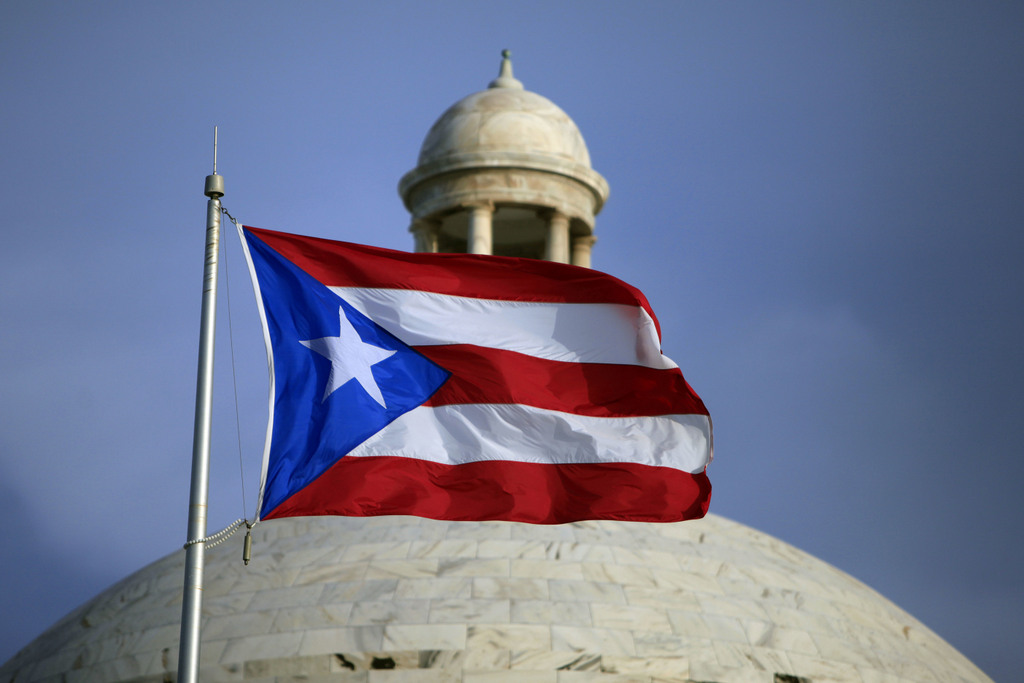[ad_1]
By DÁNICA COTO, Associated Press
SAN JUAN, Puerto Rico (AP) — Puerto Rico’s governor on Monday declared a state of emergency as a worsening drought creeps across the U.S. territory amid a coronavirus pandemic.
Starting July 2, nearly 140,000 clients, including some in the capital of San Juan, will be without water for 24 hours every other day as part of strict rationing measures. Puerto Rico’s utilities company urged people to not excessively stockpile water because it would worsen the situation, and officials asked that everyone use masks and maintain social distancing if they seek water from one of 23 water trucks set up across the island.
“We’re asking people to please use moderation,” said Doriel Pagán, executive director of Puerto Rico’s Water and Sewer Authority, adding that she could not say how long the rationing measures will last.

Fernanda Ramos, a meteorologist with the U.S. National Weather Service in San Juan, said ongoing dry conditions will be interrupted by thunderstorms forecast to affect the island on Wednesday and Thursday.
“However, we are not expecting enough rain… to solve the problem we’re seeing,” she said.
More than 26% of the island is experiencing a severe drought and another 60% is under a moderate drought, according to the U.S. Drought Monitor. Water rationing measures affecting more than 16,000 clients were imposed earlier this month in some communities in the island’s northeast region.
Gov. Wanda Vázquez said 21 of 78 municipalities are affected by the severe drought while another 29 by the moderate drought. An additional 12 municipalities face abnormally dry conditions. The worst of the drought is concentrated in Puerto Rico’s southern region, which continues to be affected by aftershocks following a 6.0-magnitude earthquake that hit in early January and caused millions of dollars in damage.
An administrative order signed Monday prohibits certain activities in most municipalities including watering gardens during daylight hours, filling pools and using a hose or non-recycled water to wash cars. Those caught face fines ranging from $250 for residents to $2,500 for industries for a first violation.
Vázquez’s announcement comes amid criticism of her administration for not dredging reservoirs, which would eliminate sediment and avoid excess loss of water. Pagán said the utilities company has been in conversation with the U.S. Federal Emergency Management Agency since Hurricane Maria about a $300 million dredging investment. She blamed the lengthy process on the number of studies and analysis needed and that require FEMA’s approval.
The upcoming water rationing measures will affect clients who are connected to the Carraízo reservoir, one of 11 that Puerto Rico’s government operates. Pagán said that reservoir was last dredged in the late 1990s. Five other reservoirs are under a state of observation. Officials have already taken other measures, including activating water wells and transferring more than 30,000 clients from Carraízo to another reservoir.
The utilities company is restructuring a portion of its multibillion-dollar debt and had suspended all capital improvement projects, including dredging, as a result of its fiscal woes. Natalie Jaresko, executive director of a federal control board that oversees Puerto Rico’s finances amid a deep economic crisis, said Monday that up to 60% of water is wasted, lost or stolen. An upcoming project to install meters at the company’s production facilities is expected to improve the situation, and the board has approved a fiscal plan for the utilities company that calls for dredging projects. However, the company has final say on whether it will carry out those projects and what kind of funding it would use.
Puerto Rico last experienced a punishing drought five years ago that affected 2.5 million people and led to severe water rationing measures. During that time, some 400,000 utility customers received water only every third day.
[ad_2]
Source link

